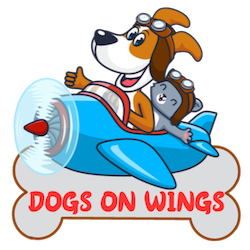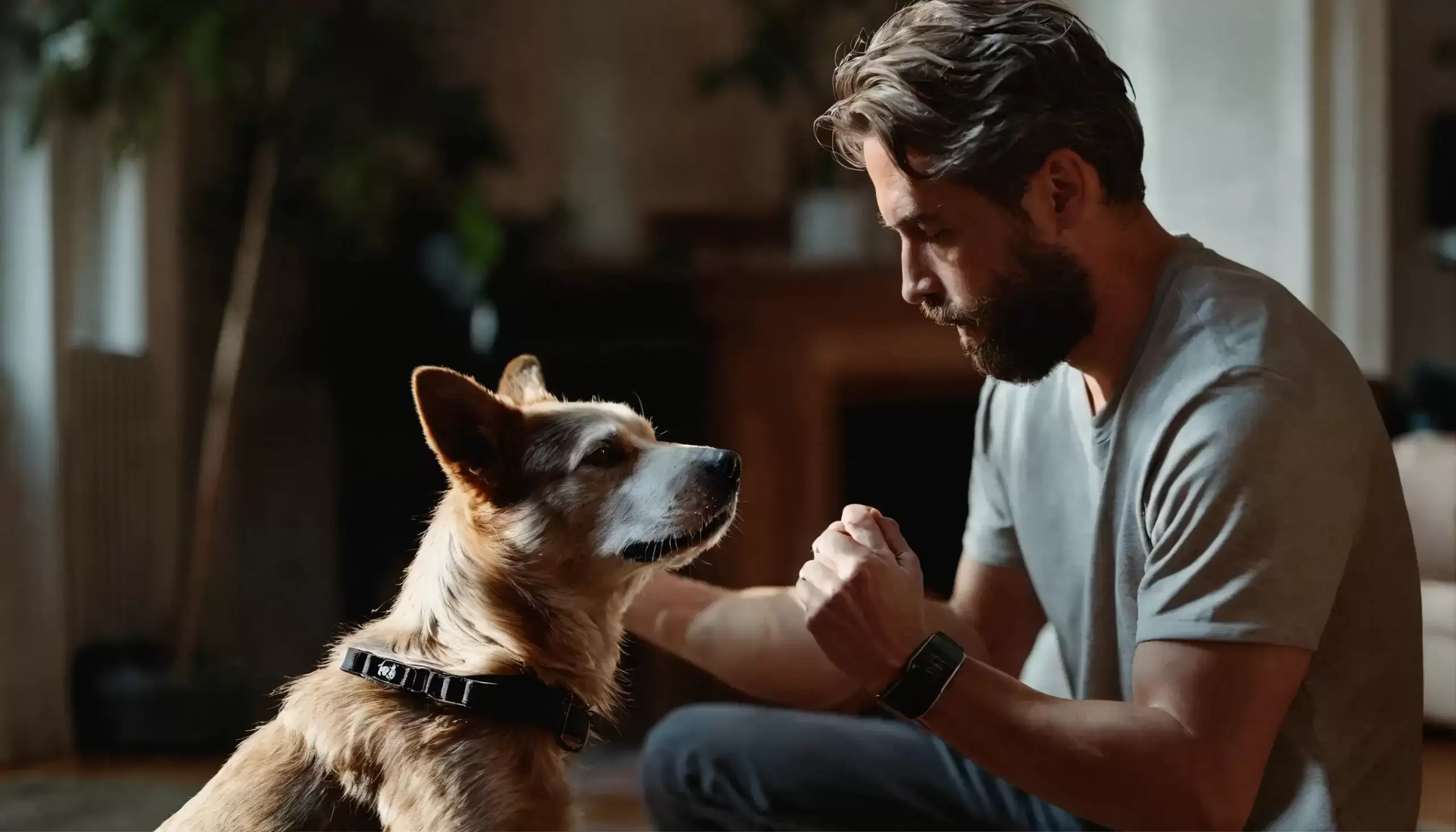The secret to puppy house training lies in having patience, knowing what to do, and using the right techniques. Even with all the love we feel for them, it’s normal to feel lost at first. After all, how do you teach that little bundle of energy to follow rules?
If you want to solve the “accidents” around the house, teach basic commands, and create a strong bond with your pup, you’re in the right place. This post will help you train in a practical way, without complications. Here, you’ll learn everything: from the first lessons to how to handle more challenging situations.
Grab a notebook to jot down tips, some treats, and, of course, have patience. In the end, the result will be worth it: a happy, obedient, and very loved dog.
First Steps in Puppy House Training
Puppies are like sponges: they absorb everything they see and hear. That’s why it’s best to start puppy house training as soon as they arrive. The earlier you start, the faster they will learn. Here are the first steps to ensure everything starts well:
Create a Routine
Puppies work much better with schedules. Create a routine for feeding, walks, and playtime. For example: feed them at the same time every day and take them to the bathroom area right afterward. This helps the puppy understand what to expect throughout the day and greatly reduces accidents.
Using a Crate to House Train a Puppy
Using a crate to house train a puppy involves creating a safe and comfortable space for the dog to learn appropriate bathroom habits. The crate should be used as a tool to establish a routine, encouraging the puppy to hold its bladder until it’s time to go outside. Gradually, the puppy associates the crate with safety and cleanliness, making house training easier.
Be Consistent
Be clear and consistent with the rules from the beginning. If you don’t want them on the couch, never allow it, not even “just today.” Puppies need consistency to understand what is and isn’t allowed.
Simple Techniques to Start Puppy Training
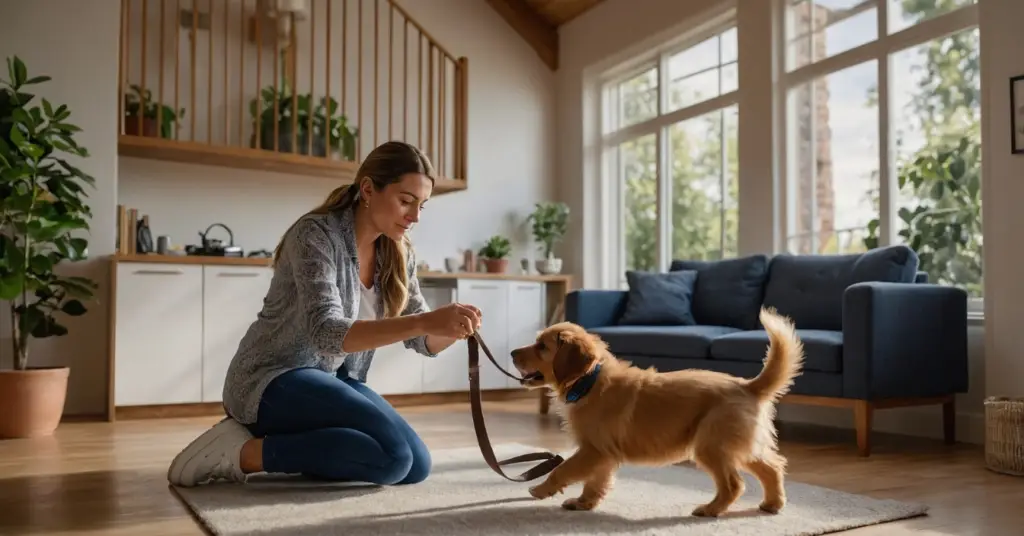
Now that the routine is set, it’s time to teach the first commands. The key is to start puppy house training with simple things and use positive reinforcement. Here are a few easy techniques you can apply:
Teach Their Name
The first step in puppy house training is to get them to recognize their own name. Whenever you want their attention, call their name in an excited voice. As soon as they look at you, offer a treat or pet them. Repeat this several times a day. In no time, they will associate the name with something positive.
The “Sit” Command
“Sit” is one of the most useful and simple commands to teach. Hold a treat close to their nose and move your hand upward so they lift their head and naturally sit down. As soon as they sit, say “sit” and reward them. With daily repetitions, they will learn quickly.
Teach Where the Bathroom Is
Take the puppy to the correct spot after eating, drinking, or waking up. Stay there until they do their business and, when they get it right, celebrate a lot: use an excited voice, give them some affection, and, if you want, offer a treat. This reinforces that this is the right place.
How to Handle Accidents and Inappropriate Behavior
Puppies are adorable, but no one escapes the famous accidents in the beginning. Knowing how to handle these situations is essential to avoid frustration and help the puppy learn faster with puppy house training:
Pee and Poop in the Wrong Spot
If the puppy goes outside the bathroom area, never scold them or rub their nose in it. This only causes fear and doesn’t teach them anything. Just clean the area with a product that eliminates the smell (such as specific enzymes) and keep reinforcing the correct spot.
Biting
Puppies bite by nature, either to relieve the discomfort of their little teeth or simply out of energy. To handle this, always have toys on hand. If they bite you, firmly say “no,” remove your hand, and offer a toy. They will soon understand what they can and can’t bite.
Excessive Barking
If the puppy barks or cries too much for attention, the best thing is to ignore it. When they calm down, reward them with affection or a treat. This teaches them that calm behavior is what brings rewards.
Socialization: Preparing the Puppy for the Outside World
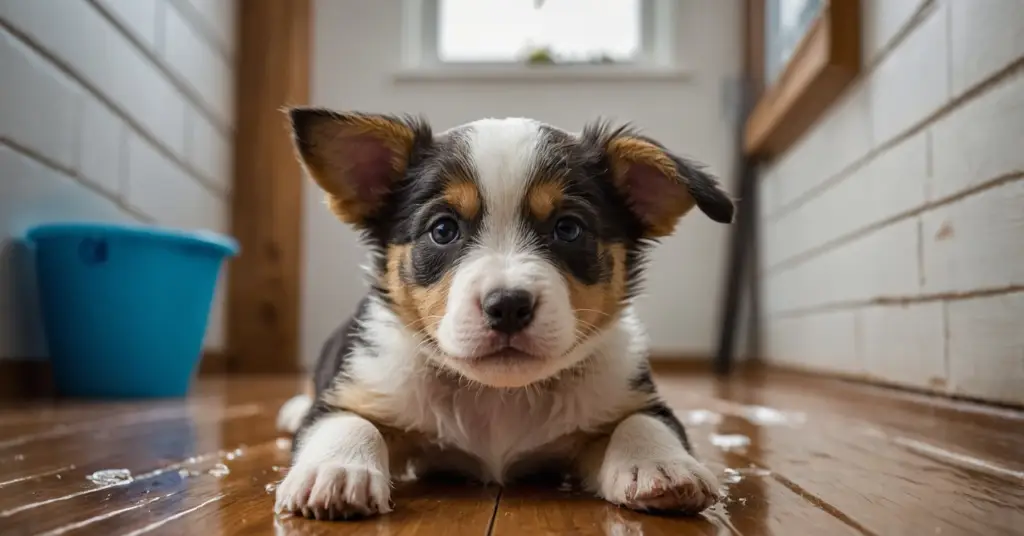
Socializing the dog is a crucial step in puppy house training, and it should start early. A well-socialized dog is more confident, calm, and less likely to develop fears or aggressive behavior.
How to Start
Take the puppy to calm places where they can observe the movement without feeling overwhelmed. Introduce them to other vaccinated dogs, people, and different environments, like parks and streets.
Always Reward
Every time they have a positive interaction – whether with another dog, a person, or a new environment – reward them with affection, treats, or encouraging words. This reinforces that these experiences are safe and pleasant.
Advanced Training: Going Beyond the Basics
Once you’ve mastered the basic commands in puppy house training, it’s time to move on to greater challenges. Teaching more complex commands or tricks requires patience but brings numerous benefits.
In addition to stimulating the puppy’s mind, this strengthens the bond between you and your dog and can even help in daily situations.
Benefits of Advanced Training
- Greater Obedience: Advanced commands improve control over the dog’s behavior, even in unexpected situations.
- Mental Stimulation: Teaching tricks keeps the dog’s mind active, preventing boredom and destructive behaviors.
- Better Coexistence: Well-trained dogs make household routines much smoother and more enjoyable.
Useful Commands
- Stay: This command is essential for the dog’s safety, especially in busy environments. Start by asking them to sit. Then, say “stay” while taking a step back. If they stay in place, return, praise, and give a treat. Gradually, increase the distance and the time before rewarding them. If they move, calmly repeat the exercise.
- Heel: Ideal for peaceful walks, the “heel” command teaches the dog to walk beside you without pulling the leash. Use a collar and a short leash, and start walking slowly. Whenever they follow without pulling, say “heel” and reward them. If they start pulling, stop walking and only continue when they are calm. This training requires consistency, but the results are lasting.
Fun Tricks
Besides useful commands, teach tricks like “shake hands,” “roll over,” or “play dead.” These exercises are great for entertaining the family and impressing guests. Always use treats to guide the behavior and associate the movement with a word or gesture.
For example, to teach “shake hands,” gently hold their paw while saying the command and reward them when they cooperate. With a little daily practice, you’ll see that your puppy can learn much more than just the basics through puppy house training!
Tips to Maintain Consistency in Training
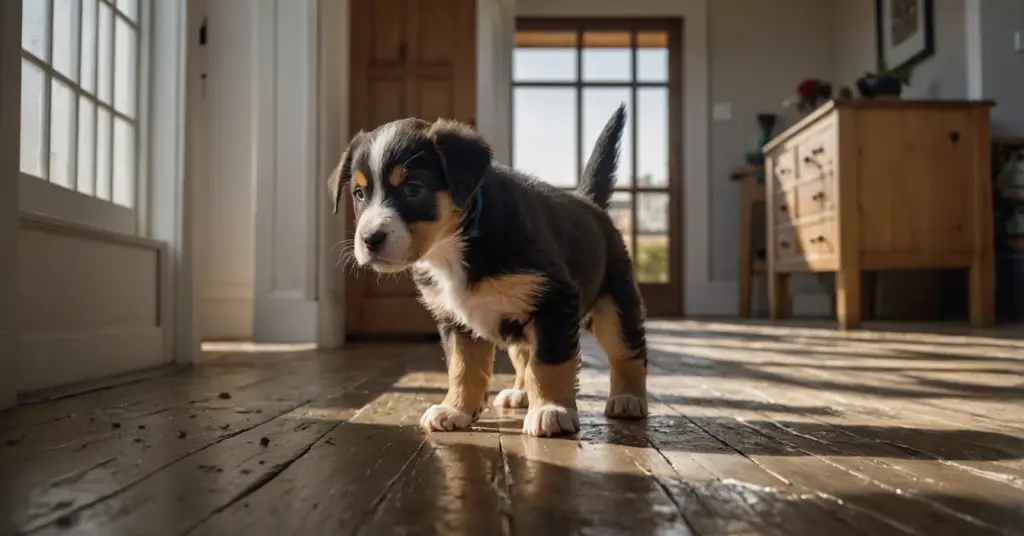
Maintaining consistency in puppy house training is the key to ensuring learning. Inconsistent training can confuse the dog and delay results, but small changes in your behavior can make all the difference.
How to Create a Routine That Actually Sticks
- Set Fixed Times: Train your puppy at the same times every day. This creates a routine that they understand and expect.
- Use Short Sessions: Long training sessions can tire out the puppy. Opt for 5 to 10-minute sessions, but repeat them several times a day.
The Importance of Using the Same Commands
Be clear and specific when giving instructions. Using different words for the same command – like switching between “sit” and “senta” – can confuse the puppy. Choose one word for each command and stay consistent.
Be Patient
Remember: training should be a positive experience for both you and the puppy. If something isn’t working, take a deep breath and try again. Avoid punishment or shouting, as this only creates insecurity and can slow down learning.
Always Reinforce Positive Behavior
Even after the puppy has learned the command, keep reinforcing with treats, praise, or affection. This keeps the behavior active and strengthens the bond between you two.
With these practices, you’ll see that consistency turns training into an enjoyable moment for both of you.
Common Mistakes in Puppy House Training and How to Avoid Them
Many dog owners, even with the best intentions, end up making mistakes that make it harder for the puppy to learn. Here are the most common mistakes and tips on how to avoid them:
- Lack of Patience: Training a puppy takes time and repetition. Expecting immediate results can be frustrating for both you and them. Accept that each dog has its own learning pace and celebrate every small progress.
- Inconsistent Rules: A classic mistake is allowing something one day and forbidding it the next. For example, if you let the puppy on the couch today but scold them for it tomorrow, they won’t understand what’s allowed. Be firm and consistent with the rules.
- Using Punishments or Scolding: Shouting or physically punishing the puppy doesn’t teach anything – it only generates fear and distrust. Instead, focus on positive reinforcement: reward the right behaviors and ignore the wrong ones.
- Training Without Proper Supervision: Leaving the puppy unsupervised around the house increases the chances of accidents and inappropriate behaviors. Always monitor or limit their space until they are properly trained.
- Delaying the Start of Training: Many believe that puppies are “too young” to learn, but the earlier you start, the better. Even small puppies are capable of understanding commands. Start early and build a solid foundation.
By avoiding these mistakes and using the strategies outlined here, you’ll have a puppy that’s well-trained and a joy to be around. Remember, consistency and patience are key!
Your Puppy Deserves the Best!
Training puppies at home can be challenging, but it’s also one of the most rewarding experiences for a pet owner. Every command learned, every small victory strengthens the bond between you and prepares the puppy for a calm and loving life.
Remember that the process is just as important as the result. Use training moments as opportunities to better understand your puppy and create a unique connection. With patience, consistency, and lots of love, you’ll have not only a well-trained dog but a loyal companion for life.
Now it’s up to you: practice the tips, celebrate the progress, and enjoy this incredible journey!
